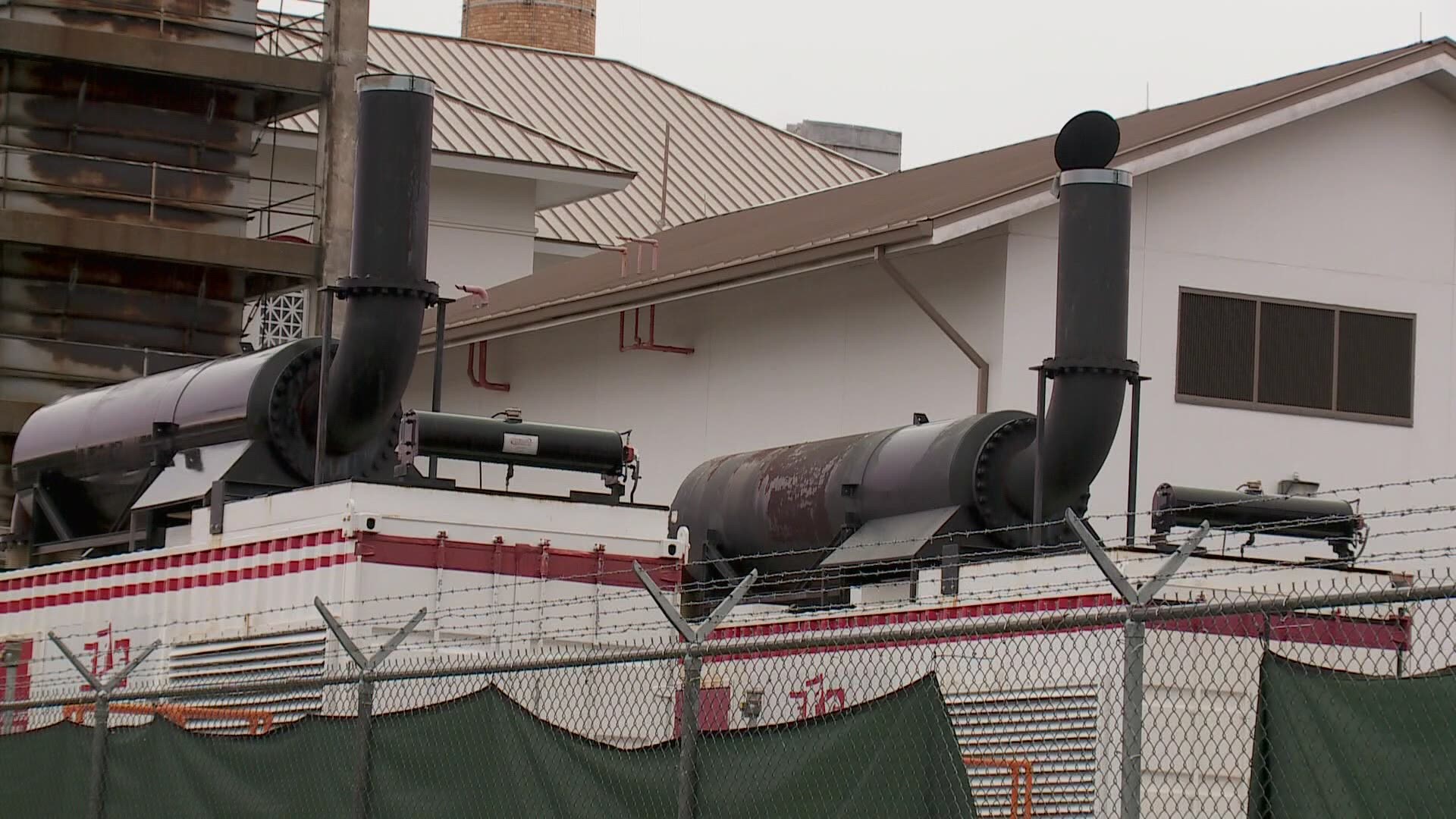As the Sewerage and Water Board’s ability to produce a special type of power to run drainage and drinking water pumps decreases, the noise levels around its Carrollton Power Plant are rising, creating a neighborhood uproar.
The Carrollton-Riverbend Neighborhood Association is holding a virtual meeting Thursday evening with Ron Spooner, the water utility’s newly-minted general superintendent, and Joe Giarrusso, the city councilman overseeing the Sewerage and Water Board.
Neighbors say they are being woken up at all hours and bombarded constantly by noise from equipment employed since mid-February to keep the Sewerage and Water Board’s in-house power plant even minimally operational.
“It started at maybe 4 o'clock in the morning,” said Joshua Joseph, referring to massive electro-motive diesel generators directly across the street from his house. “That's when I was up for the day because I couldn't even try to go back to sleep after that.”
RELATED: Major power turbine for N.O. drainage pumps down again, causing more headaches ahead of Zeta
The five EMDs produce a combined 12.5 megawatts of 25-cycle power, an old-fashioned low frequency electricity that’s rarely used anywhere in the country, but is needed in New Orleans to power about half of the city’s drainage pumps and parts of the drinking water and sewer systems, too.
The EMDs were purchased in 2017 after a massive failure of the utility’s turbines led to several citywide floods. They were supposed to be backup power to run during big storms in case the main power turbines failed.
But now, those same loud units are the drainage system's primary power source whenever it rains.
No alternatives at the moment
That’s because the only other source of 25-cycle electricity comes from Turbine 1, the smallest of the plant’s steam-powered generators, and it has its own issues.
A failing seal is preventing the unit from producing enough suction to efficiently deliver steam from the boilers to turn the turbine’s rotors. So, the S&WB has to run another loud piece of equipment called a “vacuum hog” at all times to keep it working.
The vacuum hog isn’t as loud as the EMDs, but it’s been creating constant noise at Joseph’s house equivalent to what a person hears while operating a household vacuum cleaner. Even two blocks away, it can be heard inside the house of neighborhood association board member Melissa Lilly.
“Originally, we heard a loud noise when it was raining or something like that, which was understandable that they needed to generate power to make sure the city doesn't flood,” Lilly said. “But now it's just to run their regular operations. It's for everything.”
Residents living more than a mile away in the Riverbend area have also complained about the new noisy nuisance.
Lilly said the neighborhood association wants the S&WB to install some kind of sound barrier at the fence line near the EMDs and adjacent turbine facilities.
Patching old problems
But she’s frustrated that it’s even come to this, given that the Sewerage and Water Board got more than $150 million in federal mitigation grants in 2012, and former Mayor Mitch Landrieu’s administration decided to use it not to purchase new turbines, but rather to fix century-old power equipment that’s now failing again.
“Having our money go to support things that are a hundred years old versus figuring out how to go into the modern world and be part of this evolution of energy and energy efficiency -- it's really frustrating,” Lilly said. “It’s heartbreaking almost.”
The last of the water utility’s functioning turbines for 25-cycle power, Turbine 1, only produces 6 megawatts of electricity.
To put that in perspective, the combined 18.5 megawatts produced by Turbine 1 and the five EMDs are less than one of the main turbines can generate, but those have been out of service for months.
And when a big rainstorm hits, the city has been known to need upwards of 40 megawatts at a time to drain the streets.
“I think we all need to understand what's going on over there, like how things are running and what energy sources are being utilized to make sure that we're safe,” Lilly said. “And that way we're prepared for the next storm. I mean, we're almost in a hurricane season.”
Tenuous Turbines
Turbine 4, the 20-megawatt, 100-year-old workhorse that was out of service from 2012 to 2018 and cost more than $40 million to repair, went down again last summer. The Sewerage and Water Board hopes it will be back working again in May.
Turbine 5, a 63-year-old 20-megawatt unit, exploded in December 2019. Originally, S&WB Director Ghassan Korban said the plan was to retire Turbine 5 and replace it with a brand-new gas-fired Turbine 7, but that won’t be available until early 2023 at the earliest.
The Sewerage and Water Board says it plans to tap a combination of $13 million in federal block grants, $7 million in state capital outlay funds and money from the city’s “fair share” of hotel-motel taxes to pay for the new turbine.
The S&WB says Turbine 3, a 10-megawatt generator, was overworked during Hurricane Zeta and hasn’t worked since. The utility says it has no plans to fix Turbine 3.
The water utility has been relying heavily on modern, 60-cycle power from the city’s electric utility, Entergy New Orleans. That can be used to run about half the city’s drainage pumps. It can also be converted to 25-cycle electricity using massive frequency changers, but the S&WB needs more of them and they take up a lot of space. The focus instead has been on building a new dedicated substation to make Entergy’s electricity more reliable and install new frequency changers at that facility.

